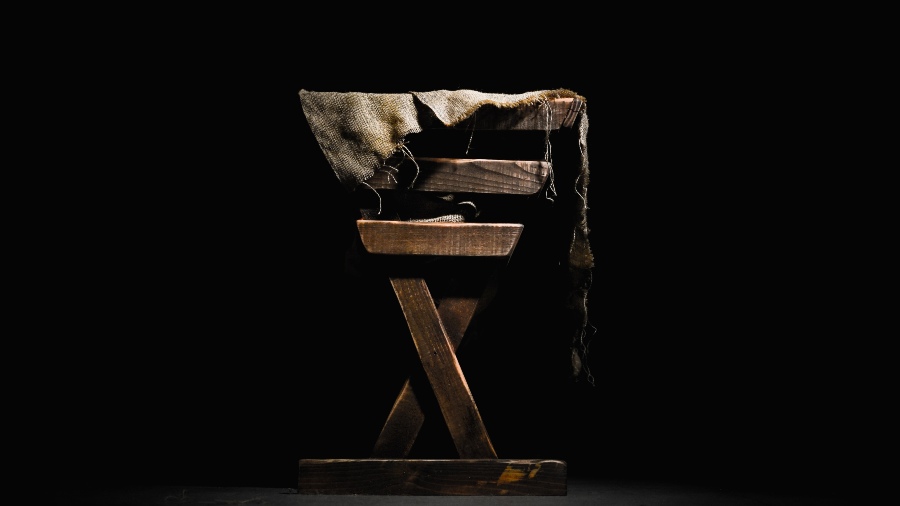Away With the Manger

Everyone loves Christmastime, and adding some tinsel, holly and mistletoe gives everything from radio shows to movies an extra bit of sparkle and charm.
Of all the stories in the Bible it is the tale of Jesus’ birth that has attracted the most elaboration, legend and myth. The simple story told by St. Matthew and St. Luke has been decorated and prettified like the simple pine tree that is laden with lights, stars, baubles, bangles and beads for Christmas. Over the years I’ve been intent to cut through some of the tinsel and trimmings to emphasize the historical basis of the Christmas stories in the gospels of Matthew and Luke.
I think this is important not because I’m a Scrooge who dislikes all the fancy and fun aspects of Christmas, but because the popular celebration of Christmas today has been cluttered up with an amazing amount of magical, fairy tale accretions. What with flying reindeer, singing snowmen, a fat elf who squeezes down every chimney in the world on Christmas Eve and dozens of other delightful fantasies, it is all too easy to relegate the real story of Christmas to the same fanciful fairy tale box with all the other kiddie’s stories.
A Fanciful Narrative
Let’s face it, the real Christmas story has some features that also seem fanciful: a magical mystical star that guides exotic wizards across a distant desert? Singing angels who appear in the night sky to simple shepherds? A beautiful angel who appears to a young girl like the fairy godmother to Cinderella?
While the true historical details of the Christmas story may dismantle much beloved traditions, the history is important because it re-affirms the fact that the birth of Jesus Christ was not a fanciful fiction, but the most important fact of human history.
Don’t get me wrong, I’m not disputing the miraculous elements of the Christmas story, I’m just aware that it’s all too easy to dismiss them as just another part of the whole mystical, mythical celebration we call Christmas.
In fact, that is precisely what many modern biblical scholars have done. They treat the infancy narratives of Jesus as charming parables — fanciful myths dreamed up by the early Christians in order to make Jesus seem more divine and of a supernatural origin.
A Christmas Story in Historical Detail
So in The Mystery of the Magi I showed how the wise men were real historical figures and how their journey fit neatly into what we know of the history and culture of first century Palestine. Last year I wrote The Secret of the Bethlehem Shepherds to help ground St. Luke’s story of Jesus’ birth in the facts of history.
There are multiple examples in the books that show how certain much-loved details entered into our Christmas story even though they are not mentioned in the gospel.
Please Support The Stream: Equipping Christians to Think Clearly About the Political, Economic, and Moral Issues of Our Day.
So, for example, Mary rode a donkey from Nazareth to Bethlehem right? Well, she probably did, but St. Luke never mentions the little donkey. That enters the tradition with a document from the early second century called the Protoevangelium of James. The ox and ass in the stable? Matthew and Luke don’t mention them either. They enter the story around the eighth century from an interpretation of Isaiah 1:3.
The ox knows its owner,
and the donkey its master’s crib,
but Israel does not know,
my people do not understand.
The Holy Family were turned away from an inn by a grumpy innkeeper and had to shelter in a drafty stable right? Sorry. The drafty stable probably originated with St. Francis’ creation of the first Christmas creche in the thirteenth century. The real stable was very different.
There’s no mention of an innkeeper — grumpy or cheerful — in the gospels. That wonderful detail crept into the tradition in the mystery plays of the Middle Ages. The “inn” itself? The word often translated as “inn” is better understood as the guest room of a house.
And what about the manger bed? St. Joseph took a rickety wooden manger that was filled with straw and laid baby Jesus in it right? Well almost, but not quite. Archeologists and historians tell us that many of the simple houses in the Bethlehem area of the time were built in front of caves. The caves were used for stabling the animals and for storage.
In between the cave and the main room of the house was a stone half wall. On top of the wall an indentation was carved to serve as a feeding trough for the animals. This was likely the manger bed that in which the Christ child was laid.
The Most Important Fact of Human History
While the true historical details of the Christmas story may dismantle much beloved traditions, the history is important because it re-affirms the fact that the birth of Jesus Christ was not a fanciful fiction, but the most important fact of human history.
Get Dwight Longenecker’s two Christmas books in a special offer at dwightlongenecker.com.
Fr. Dwight Longenecker is the pastor of Our Lady of the Rosary Church in Greenville, South Carolina. His latest book The Way of the Wilderness Warrior uses the classical hero’s quest to give a plan for spiritual growth.


